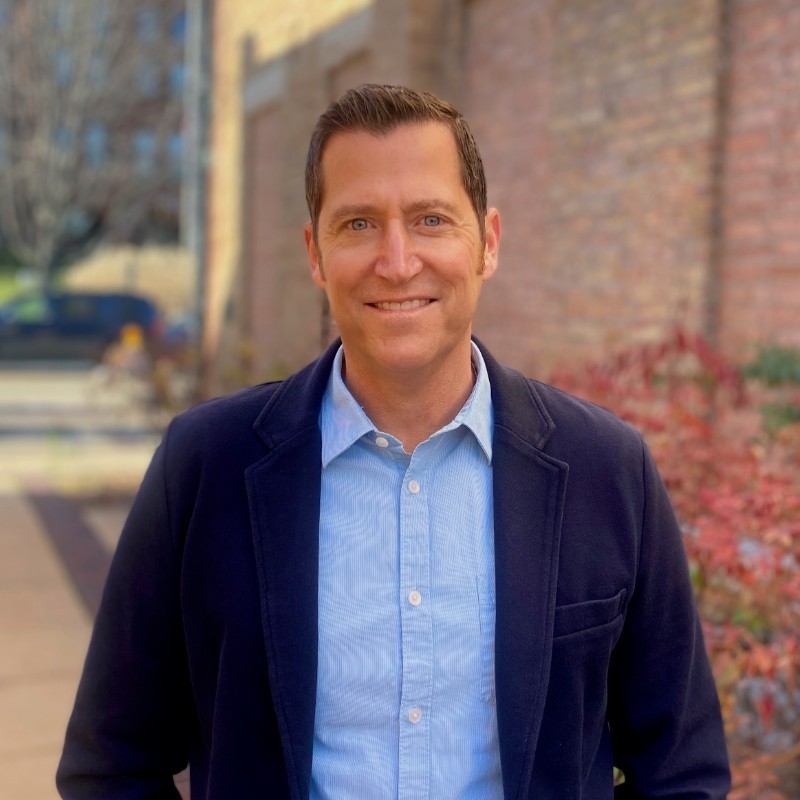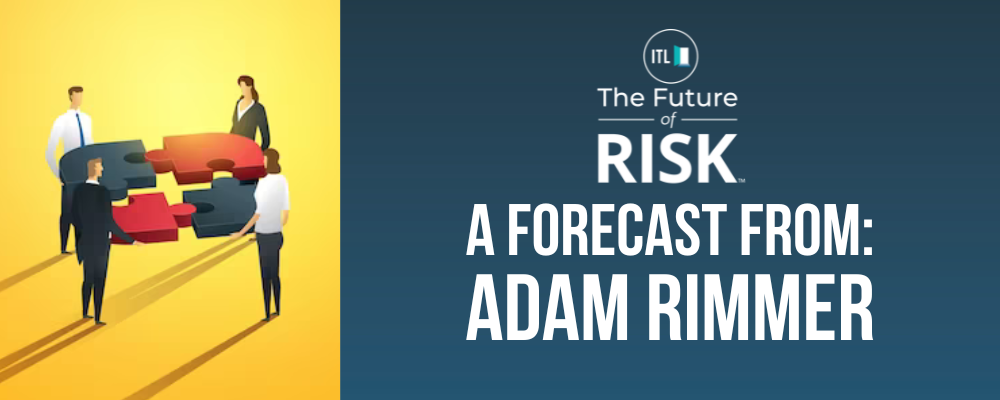Paul Carroll
I wonder, first, if you would describe what you see as the main points of friction between carriers and agents and brokers?
Jeff Heine
Let's look at commercial insurance. There's a lot of data and documents that are passed back and forth between the broker and the carrier and, downstream, the reinsurer. One mature prospect we have literally says it still emails spreadsheets. Think about the loss of time just in structuring the risk to get it to market. And did we capture all the data? What about midterm adjustments? Can you keep the data current? That's been a consistent point of friction.
The friction makes getting the right coverage incredibly difficult. When I recently bought some insurance for a condo, I went with the agent who did the best job of using external data to suggest the right coverage for me. The friction extends all the way through claims, opportunities with loss prevention and so on.
Paul Carroll
I always try to think of analogies, and, in this case, the process of applying for insurance reminds me of applying to colleges back in my day. It’s all so manual, and a lot may differ from carrier to carrier, from agent to agent. I wonder why the process can’t be more like the universal application that so many colleges use now. My kids used the universal form, applied to maybe 15 schools, and went to Cal and Yale, while I applied to three and went to Michigan State. Just sayin’.
Jeff Heine
Absolutely. In my recent experience, one agent asked for all kinds of basic information and had me take some photos, while another basically just asked for the address and came back with more complete information.
A lot of times, there will be midterm adjustments, but they won’t be captured into the AMS [agency management system], so they won’t show up in the renewal. That’s frustrating for the customer.
Paul Carroll
What are other points of friction?
Jeff Heine
Carriers not only want to know as much as possible about the risk but also want to enrich the data based on information about similar properties. Carriers also need broad access to the data, not just in silos. That’s where LLMs [large language models, used in generative AI] have a real opportunity.
We did a survey on the state of digital transformation in insurance, and we learned that about three out of four insurance organizations have a plan in place to make significant changes to their tech stack in the next year. That’s because it's costing them too much money and doesn’t give carriers the data they need to properly price the risk or serve the needs of the account.
Paul Carroll
An old colleague of mine, working at a claims-related insurtech, said his goal was to make the claim the boss of the process. Rather than have a person be the boss, sorting through emails and trying to keep track of all the data that needs to be gathered and all the people who need to be pinged, the claim would use AI to pull everything together. Jeff, I need this information. Michelle, I need this information. Jeff, I’m still waiting for that information. That sort of thing.
Jeff Heine
Rather than have the broker asking questions of the policyholder, a better way is: We’ve surrounded the broker with all kinds of information, so have them draw on that information and just ask the policyholder to confirm the answers to questions.
We'll call it a container. Instead of making people enter information in every system multiple times, why not flip the dynamic and use the information that’s out there, enrich it and start to look at the actual exposure at the front porch before it even hits the carrier?
Think about the cost to the carrier just to decline a submission and how much they could save.
Paul Carroll
I hear you on, Can you confirm this? Autofill is my friend.
We’ve started to get into solutions, but I'll explicitly ask that question: What can be done in the short term and then what can be done in the long term to reduce the friction?
Jeff Heine
Some of it is just about modernizing. There are still so many different legacy applications out there that don't provide a formal view for the customer. Then there are technologies that sit on top of the legacy systems—and I mean systems, plural. Our research shows that insurance organizations are using at least five-plus different tech systems. And it's not just policy admins; it's how you rate/quote/bind; it’s the CRM [customer relationship management] system. So we have to modernize, however that's done.
We also have to have modern applications, like a customer insurance portal, so you can interact with customers in the way they want to be met, in the way they’re used to. I think that need is acknowledged. It's just a really tough shift.
But again, I’d stress the need to invert the submission process. Don’t just have the broker gather data. Start by using other technologies that can not only get the data you need but enrich it. You take care of the insurance opportunity while making yourself easier to do business with.
I know there are folks out there doing this. There's actually quite a bit of money spent on the whole submission process by the carriers.
Paul Carroll
That's great. Is there anything I didn't ask about that I should have asked about when it comes to friction?
Jeff Heine
I’d just come back to this idea of a container. Let’s think of the insured having all their information where it's a bit portable, and give them a bit more power over their transactions. You know, where I, as the customer, am not having to rekey information all the time. I know a bit more about my risk.
Smarter consumers are actually looking for ways to manage their exposure themselves, and I think that the container idea empowers them a bit with the portability of their data.
Paul Carroll
I like that. That certainly has been the push for a long time in healthcare, to give people full access to their records and to make them portable. We’re a long way from getting there, but I think that’s the right direction to move in.
Jeff Heine
In some markets, like Florida and California, insurance has become much more difficult to obtain, but Firewise designations, for instance, are helping people prepare their homes to make them more insurable. That's an example of that container, if you will. People are getting information and having to take responsibility. The actual insured will be more of a steward of what they do in that container.
Paul Carroll
I see carriers not just getting more granular about how they're evaluating the risk but then communicating back to the homeowner. I owned a home in Lake Tahoe for a number of years back when my kids were younger and were ski racers, and I got sort of vague feedback in those days about, well, you need to have brush cleared away from the house for this distance to reduce the risk from wildfire. That was sort of helpful, but these days carriers are starting to be more specific. They don’t just say, your risk is X. They say, your risk is X because of these factors. If you change the landscaping, if you upgrade the roof, if you do something else, then your risk score will improve by this much.
Jeff Heine
You make more of your own choices. And that’s going to force the agency and broker market to think and behave a bit differently, because the insured is becoming more of the risk manager.
Paul Carroll
This is great, Jeff. Thanks.
About Jeff Heine
 |
Jeff Heine serves as chief revenue officer at Novidea, responsible for driving global revenue and other revenue-focused functions to achieve the company’s business objectives. He brings 20 years of property and casualty (P&C) insurance industry expertise. Most recently, he served as CRO at Betterview, a remote property intelligence platform that turns data into actionable insights for P&C insurance carriers. The company was acquired by Nearmap, one of the world’s largest location intelligence and aerial imagery solutions providers, in December 2023. Before that, Heine was CRO at Groundspeed Analytics, an AI-powered ingestion and data solution for the commercial P&C industry, which Insurance Quantified acquired in June 2023. Heine has other related experience, including Guidewire Software, Adsensa (now Coupa Software) and CCC Information Services. He holds a BS from Bradley University in Illinois. |








